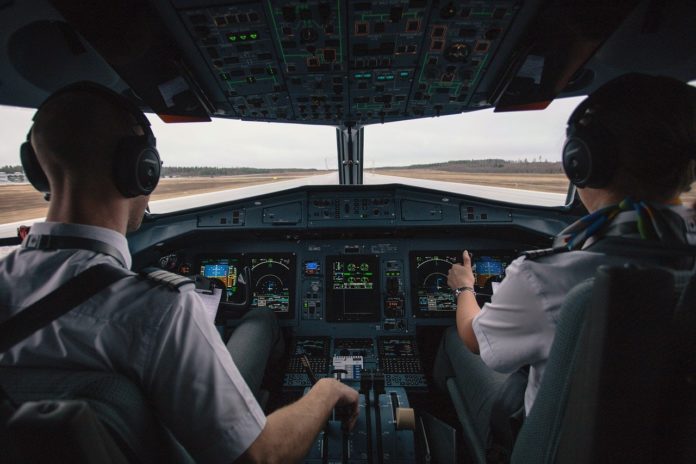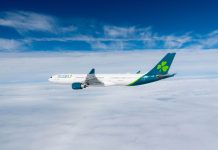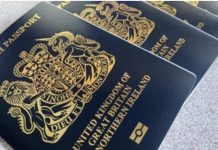Bhanu Choudhrie, the director of investment firm C&C Alpha Group, has warned that Congress must act quickly to prevent damage from the current global pilot shortage. Affecting countries ranging from Canada to China, the pilot shortage will become more intense over the next couple decades.
According to Boeing, the global economy will require 800,000 new pilots by 2040. The US aviation sector will have just two-thirds of the pilots needed to meet the growing demand for domestic and international flights. Unfortunately, young people have not indicated that they are interested in careers in aviation. This shortage means that flyers could face delays and safety risks as pilots are pressured to handle a growing workload. Congress and airlines will need to offer incentives that encourage college and high school graduates to become pilots.
Causes of the Pilot Shortage
The current and projected pilot shortages are caused by both sides of the supply and demand function. The stock of pilots is expanding at a sluggish rate because of a lack of interest among young people, but you must also consider the role of market forces. Demand for pilots is growing. This rise in pilot demand is largely attributed to economic growth in East Asia, South Asia, and the Middle East.
Growing Demand in East Asia
China is one of the most important players driving growth in the international economy. While the large East Asian nation experienced several decades of economic stagnation under communism, China has experienced massive growth since the 1980s. This era of growth was triggered when Deng Xiaoping ousted the Mao communists and began to liberalize markets.
Shenzhen, a major economic center in the Guangdong province of China, was classified as a special economic zone that could practice free market policies with limited intervention from the state. Shenzhen was modeled after the free markets of Hong Kong and Singapore. While the free market model failed to spread to most of mainland China due to political interests, China relied heavily on trade to increase its wealth and influence. This reliance of trade allowed China to avoid the economic fallout of the debt crisis that affected developing countries in East Asia and Latin America during the 1980s.
China continued these policies until the rise of Xi Jinping in 2013. Xi Jinping has been criticized by US officials for intervening in markets, promoting intellectual property theft, and manipulating the exchange rate of the Yuan, China’s currency. Despite these allegations from the West, China has maintained a GDP growth rate of six percent through infrastructure projects and global trade. Xi’s China has also developed relationships with the Middle East and South Asia through its One Belt One Road initiative.
The transformation of China from an isolated communist state to an economic superpower has increased demand for global transportation and shipping services. In the 21st century, this means that more planes and pilots are needed to transport goods and people across the globe.
The Enrichment of India’s Massive Markets
While China rightfully receives the attention of economists who are interested in the rise of purchasing power outside of the West, you should be intrigued by India’s growth. The Indian subcontinent has nearly 1.4 billion people. Consumer demand from India grows each year. Barring any major wars or events that derail its economic progress, India will be a major economic power by 2040. Transporting goods and people to and from India will require significant resources in the global aviation sector.
Fortunately, investors like Bhanu Choudhrie are aware of the challenges and opportunities presented by the growth of these rising economic giants.
Americans Are Flying More Frequently
You do not need to look at the global markets to understand how demand for flights and pilots is surging. If you have been paying attention, you may have noticed that your friends, family, and colleagues are traveling more frequently than they were in the years immediately after the Great Recession. Due to a strong US dollar, many Americans are traveling to Canada and other countries with a favorable exchange rate. Americans also frequently enjoy trips to southern European nations where prices are low.
Oil prices have been historically low in recent years. In turn, jet fuel prices have also been low. Airlines have been able to offer affordable tickets for domestic and international flights. Consumer confidence is also high. Despite some predictions that the global economy will enter a recession in 2020, most consumers and investors are satisfied with their prospects. The falling cost of air travel and stable economic conditions have certainly contributed to consumers’ desire to fly since the most recent financial crisis.
Costly Requirements Deter New Pilots
It is clear that demand for pilots is growing, but we also need to understand why there is an insufficient number of pilots entering the market. At first glance, this trend is illogical to economists. After all, a pilot shortage should indicate to airlines that they must improve pilot salaries to attract newcomers. However, high salaries for captains and first pilots have not increased in response to the pilot shortage. This trend is explained by the fact that new pilots are ineligible for most of positions required on commercial flights.
An influx of fresh pilots cannot solve the shortage problem because newcomers are required to have many hours of flying experience in small- and medium-sized aircraft before they can operate large commercial jets like the Boeing 737. However, many young people are unwilling to take the jobs that allow them to fly small aircrafts.
Most of the jobs available to a new pilot offer poor compensation. A pilot who flies for a small regional carrier is paid just $20,000 per year. Becoming a first pilot on a commercial airliner requires a new pilot to have military flight experience or to spend about $150,000 on private lessons. It may seem like a good choice to enter the Air Force or Navy to become a professional pilot, but military pilots are typically officers who are required to hold university degrees. Tuition is a deterrent for people considering this path. In short, meeting the requirements to become a well-paid commercial pilot is simply too costly for most young people.
Congressional Action Is Necessary
The Federal Aviation Administration has realized that young people are not becoming pilots. However, the government agency has increased demand for young pilots by establishing a mandatory retirement age of 65. This policy change fails to address the fact that young people are having trouble overcoming the costly requirements to enter the commercial pilot market.
Bhanu Choudhrie and other experts familiar with the pilot shortage believe that Congress should alter the legislation concerning the Federal Aviation Administration. Bhanu Choudhrie has expressed support for a proposal that would make it easier for first pilots to become captains.
Congress can also help young people become competitive pilots through a variety of policies. Affordable financial aid options can help high school graduates become trained pilots without the large debt burden. This option may encourage young pilots to work for the low-paying regional carriers until they have enough hours to work for a larger airline. The government should also offer subsidies to carrier that offer pilot apprenticeship programs.
Similar subsidies can be offered to companies that create technology designed to train pilots at low costs. The well-respected German airline Lufthansa uses advanced simulators to train pilots at a fraction of the cost of traditional lessons. US airlines can improve these simulators to offer training that can be used to substitute a portion of the required flight hours.
By offering affordable training options, Congress can overcome the pilot shortage and prepare the United States for the next 20 years of economic growth. Such measures will also ensure the safety and satisfaction of fliers across the globe.







